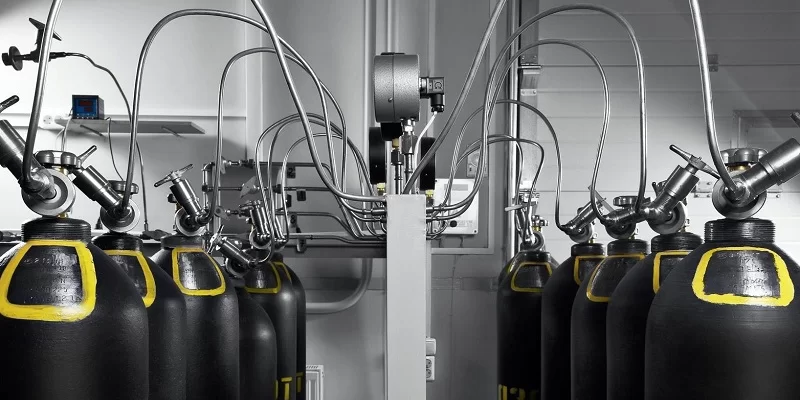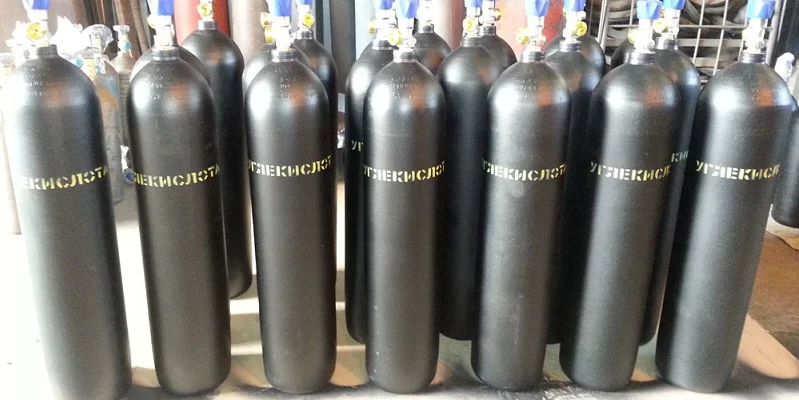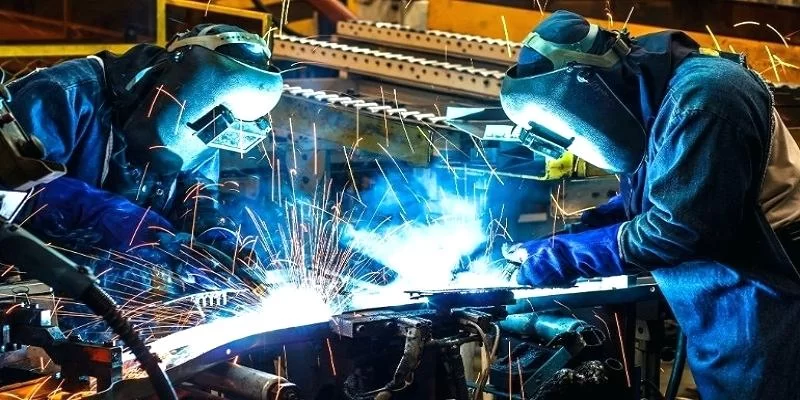
Compare carbon dioxide or welding mixture
Shielding gases supplied to the place of formation of the weld serve to protect the weld pool and the arc from atmospheric gases, which improves the quality of the joint. In addition, shielding gases themselves affect the composition of the weld, increasing its density, penetration depth, and improving the microstructure of the metal.
In the practice of welding, two types of gases are used: mixtures and pure carbon dioxide without impurities.
Our experts reviewed the properties and features of the use of each type of shielding gases, their advantages and disadvantages, which will help you make the right choice, since each variety has its own scope.
Welding mixtures

The main component of welding mixtures is the inert gas argon, which can be mixed not only with other inert gases, but also with active gases. In addition, active varieties can also be mixed with each other. The following welding mixtures are used:
-
Argon with carbon dioxide — used in welding products from carbon and low alloy steels. The mixture contributes to a more even and plastic formation of the seam, reduces pore formation, facilitates the transfer of electrode material;
-
Argon with oxygen (not more than 5%) — used when working with products made of alloyed and low-alloyed steels. Increases the density of the weld by reducing the porosity of the metal, facilitates the process of jet transfer of the electrode material. Allows the use of a wider range of filler wires;
-
Argon with hydrogen — used to join parts made of stainless steel and nickel alloys;
-
Argon and helium — creates an absolutely inert environment, is used to connect elements made of aluminum, copper and titanium, as well as chromium-nickel steel;
-
Carbon dioxide and oxygen — used in welding of carbon and low alloy steels. Allows you to form a more even seam by preventing metal spatter, increases productivity due to a significant increase in temperature in the welding zone. The disadvantages include increased oxidation of the material, which reduces the strength properties of the connection.
Carbon dioxide

Carbon dioxide or carbon dioxide in its pure form is used for welding. It is used for parts made of carbon and low-alloy steels, as well as nickel and iron-nickel alloys, including products of great thickness.
Pure carbon dioxide has a higher density than air, so when introduced into the weld zone, it displaces air, providing a protective environment. Carbon dioxide is colorless and odorless, stored in steel cylinders in the form of a liquid substance under pressure, and supplied to the work area using a special gearbox. It can be used for any type of welding — manual, semi-automatic or automatic. Carbon dioxide has the widest application in semi-automatic welding.
Iron and carbon, which are part of the parts to be welded, are oxidized during welding in a carbon dioxide environment and under its influence. Therefore, to form a seam, a special filler wire is used, which includes silicon and manganese, which prevents metal oxidation. The consumption of carbon dioxide depends on several factors: the thickness of the metal of the workpieces to be joined, the diameter of the filler wire, and the parameters of the current supplied to the electrode.
Table of advantages and disadvantages
|
|
|
|
|
Welding mixtures
|
+ increase in productivity by increasing the mass of deposited metal per unit time;
+ reduction of excess consumption of filler material by reducing the amount of spatter;
+ increase in the plasticity of the seam, density due to less pore formation and, accordingly, a significant increase in the strength of the joint;
+ reducing the amount of harmful aerosols and fumes in the workplace, which improves hygienic working conditions;
+ process stability even with uneven filler wire feed.
|
— for a mixture of argon with oxygen, increased oxidation of metals, which reduces the strength of the seams, as well as the formation of carbon monoxide harmful to health;
— a mixture of argon with carbon dioxide is explosive, which requires special precautions when working;
— when working with a mixture of argon with carbon dioxide, carbon monoxide is also formed due to the interaction of carbon dioxide with oxygen in the air, so the operator must work in a special mask.
|
|
Carbon dioxide
|
+ the ability to weld thin metal sheets that do not deform, as well as relatively thick workpieces in any spatial position, that is, to make horizontal, vertical and ceiling seams;
+ formation of a good arc, which is convenient for welders with little experience;
+ low cost of the welding method and carbon dioxide itself;
+ safety at work;
+ possibility of welding metals with different characteristics;
+ simplicity and availability of equipment for welding;
+ high quality of the resulting seams;
+ when connecting parts with a large thickness of metal, carbon dioxide releases a lot of heat, which increases productivity.
|
— increased spatter formation, which makes it necessary to clean the welds after welding;
— the strength characteristics of the welds are lower than when welding with submerged arc or coated electrodes, therefore it is not recommended to use this method for parts that will work in conditions of low temperatures or shock loads.
|
Main differences
The main differences between carbon dioxide and welding mixtures are as follows:
-
carbon dioxide can only be used for welding certain types of metals — carbon and low-alloy, while welding mixtures have a wider scope — they can be used to weld parts made of non-ferrous metals and various alloys;
-
carbon dioxide is homogeneous, and welding mixtures consist of different gases that must be mixed using special equipment in strictly established proportions;
-
the productivity of welding in the environment of welding mixtures is almost twice as high as the productivity of welding in the environment of carbon dioxide.
How are the materials similar?
Welding mixtures and carbon dioxide have one thing in common — they are used to create an environment that improves the quality and productivity of welding work.
Conclusions: Summing up, we can conclude that welding mixtures have an advantage over carbon dioxide due to the wider possibilities of working with different materials, higher productivity and obtaining better and stronger joints. At the same time, it should be noted that work with carbon dioxide may be preferable in the narrow field of work with certain materials and in semi-automatic welding.

Добавить комментарий
Для отправки комментария вам необходимо авторизоваться.